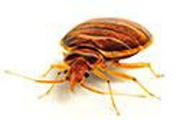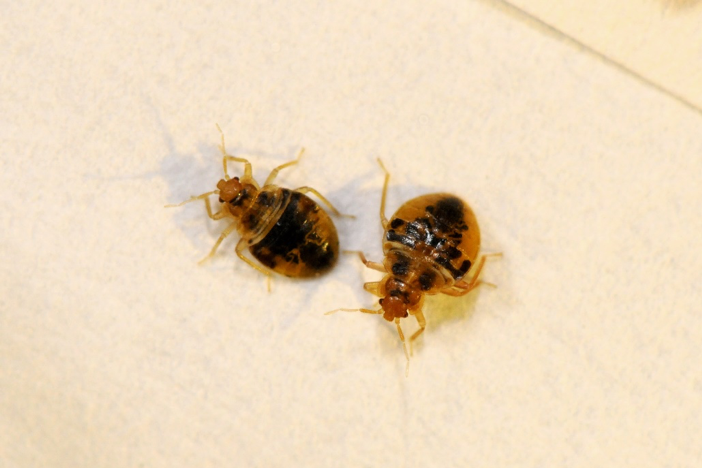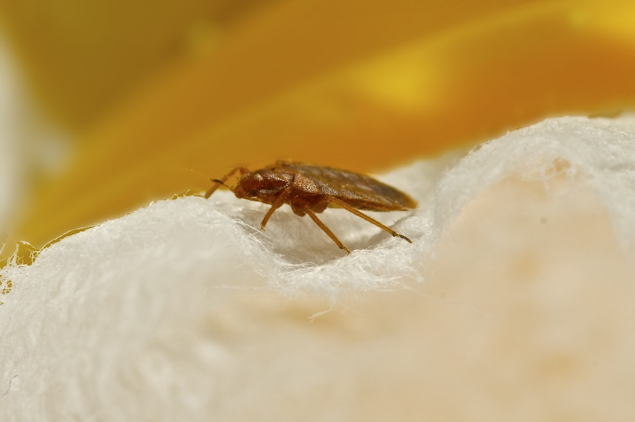 Bed bugs are one of the most dreaded pests that you can encounter as a homeowner in California. They are incredibly resilient and are challenging to get rid of once they begin multiplying in your home. An infestation can start when you bring home secondhand furniture, stay in hotels, visit movie theaters, and go to other places where bed bugs already live. These tiny parasitic pests are master hitchhikers that stealthily move from place to place as stowaways in briefcases, luggage, and furniture. You may not even know that you have an infestation until it’s already out of hand.
Bed bugs are one of the most dreaded pests that you can encounter as a homeowner in California. They are incredibly resilient and are challenging to get rid of once they begin multiplying in your home. An infestation can start when you bring home secondhand furniture, stay in hotels, visit movie theaters, and go to other places where bed bugs already live. These tiny parasitic pests are master hitchhikers that stealthily move from place to place as stowaways in briefcases, luggage, and furniture. You may not even know that you have an infestation until it’s already out of hand.

What do bed bugs look like?
Bed bugs look like small, flat, reddish-brown insects that are about the size of an apple seed. They are slow moving and do not fly. During their lifetime, females lay between 200 and 500 eggs (white and approximately 1/32″ long) that hatch in 6 to 17 days. Immature nymphs (babies) are very small and translucent in color when they hatch and are about the size of the ballpoint on a pen. If there are bed bugs in your home, you may not see them. But there are clues that bed bugs leave behind when they infest homes.
How can I tell if I have bed bugs?
If you suspect that you have bed bug activity in your home, the most accurate way to determine whether you have a bed bug infestation is to call professionals at AAI Pest Control for an inspection.
In the meantime, search for evidence of a bed bug infestation in your home.
- Bite marks on your arms and upper body. Typically, bed bug bite marks look like raised red welts, and manifest in small clustered rows. Bite marks near your feet and ankles may be attributed to fleas.
- Molted bed bug skin. These look like shells of bed bugs and are lighter copper colored.
- Dark spotting or blood droplets on mattresses, pillows or bedding. These are waste products bed bugs excrete while feeding on its host.
If you think you have a bed bug problem, you want to look throughout your bedroom, primarily in the box spring, headboard, and frame of the bed. Bed bugs also get deep into other furniture in the bedroom or living spaces like couches, chairs, or dressers. Keep in mind that bed bugs are not exclusive to beds. You can have them anywhere in your home, such as behind electrical outlets and behind hung picture frames and artwork.
How can I tell if I’ve been bitten by a bed bug?
Bed bug bites can be identified by the location on your body, the coloring, and pattern. There are common characteristics of bite manifestation, but the effects can vary from person to person. The bites are typically located on the upper body where skin is exposed such as your neck, chest and arms. Bed bug bites are very itchy and look like red raised welts that are similar to mosquito bites, in lines of 3-4 or more. Their bites are typically painless, so the sleeping victim is usually unaware the tiny insects are feeding on them as they sleep. Once they are fully engorged with blood, they will once again return to their hiding places where they often remain undetected. They typically reside within close range to the sleeping areas but have been shown in research to travel several feet to locate a host.
A visual inspection of the skin does not necessary confirm the presence of bed bug activity at your home. Only a professional bed bug inspection can confirm a bed bug infestation.
How do bed bugs get into homes?
Common places that harbor bed bugs are hotel rooms, college dormitories, thrift stores, day cares, and movie theaters. In order for an infestation to happen in your home, you will need to come into contact with bed bugs. They do not live outdoors like ants and other common household pests. Once you interact with something such as a wicker chair from a thrift store or a hotel room, bed bugs cling to moving items and can easily fall off, allowing them to relocate and spread. As the host moves, they can fall off and hatch far away from where they originally came from. Bed bugs can enter homes when the following conditions exist.
- Brought home from day care programs or from school by children
- Brought home from your place of work
- Picked up during business or leisure travel
- Guests bringing bed bugs into your home in their luggage or personal belongings during their visit
- Cleaning services, baby sitters, nannies or other people who frequent your home on regular basis
- Brought in on used furniture that is already infested with bed bugs
- Brought home on host from a variety of locations including public transportation, offices, movie theaters, hospitals, etc.
You can find bed bugs at schools and office buildings when they latch on to something like a fabric bag or even clothing. In grade schools, it could be backpacks and in an office setting, it could be a laptop bag. Either way, the bed bugs need to come from a home with an active infestation. The problem with spreading bed bugs is that someone may not know that they have an infestation.
Can I prevent bringing bed bugs back from hotels?

In a survey by the National Pest Management Association (NPMA), 75% of pest control professionals indicated that they have encountered infestations of bed bugs in hotels and motels. The NPMA recommends the following tips for bed bug prevention when traveling:
- At hotels, pull back the sheets and inspect the mattress seams, particularly at the corners, for telltale stains or spots. If you see anything suspect, notify management and change rooms/establishments immediately.
- Thoroughly inspect the entire room before unpacking, including behind the headboard and in sofas/chairs. If any pests are spotted, change rooms/ establishments immediately.
- If you do need to change rooms, be sure that you do not move to a room adjacent and/or directly above/below the suspected infestation. Bed bugs can easily hitchhike via housekeeping carts, luggage and even through wall sockets. If the infestation is spreading, it typically does so in the rooms closest to the origin.
- Consider placing your suitcase in a plastic trash bag or protective cover during the duration of your trip to ensure that bed bugs cannot take up residence there prior to departure.
- Remember: bed bugs travel by hitching rides. After your trip, inspect your suitcases before bringing them into the house. Vacuum your suitcase thoroughly before storing away. Consider using a garment hand steamer to steam your luggage, which will kill any bed bugs or eggs that may have hitched a ride home.
- Wash all of your clothes – even those that have not been worn – in hot water to ensure that any bed bugs that may have made it that far are not placed into your drawers/closet.
How can I get rid of bed bugs on my own?
If you think you have bed bugs, do not try to treat on your own. Without in-depth knowledge of bed bug biology and behavior, the proper professional tools, and entomological training, it’s more than likely that you will just push and scatter bed bugs rather than eliminating them. DIY tactics and store bought products may kill a few bed bugs, but ultimately it will repel bed bugs, pushing them out of their hiding places. This is also true for throwing out affected box springs and furniture. Bed bugs will simply find other hiding spaces in your home rather than being thrown out. Doing things on your own makes it even more challenging and time consuming for pest control professionals to eliminate bed bugs when the pests are scattered throughout different rooms and harder to find. Call the bed bug professionals at AAI Pest Control or fill out the contact form on this page to schedule a bed bug inspection at your home!
What Are Bed Bugs Professional Pest Control Services in Tracy CA?
Serving Northern California



